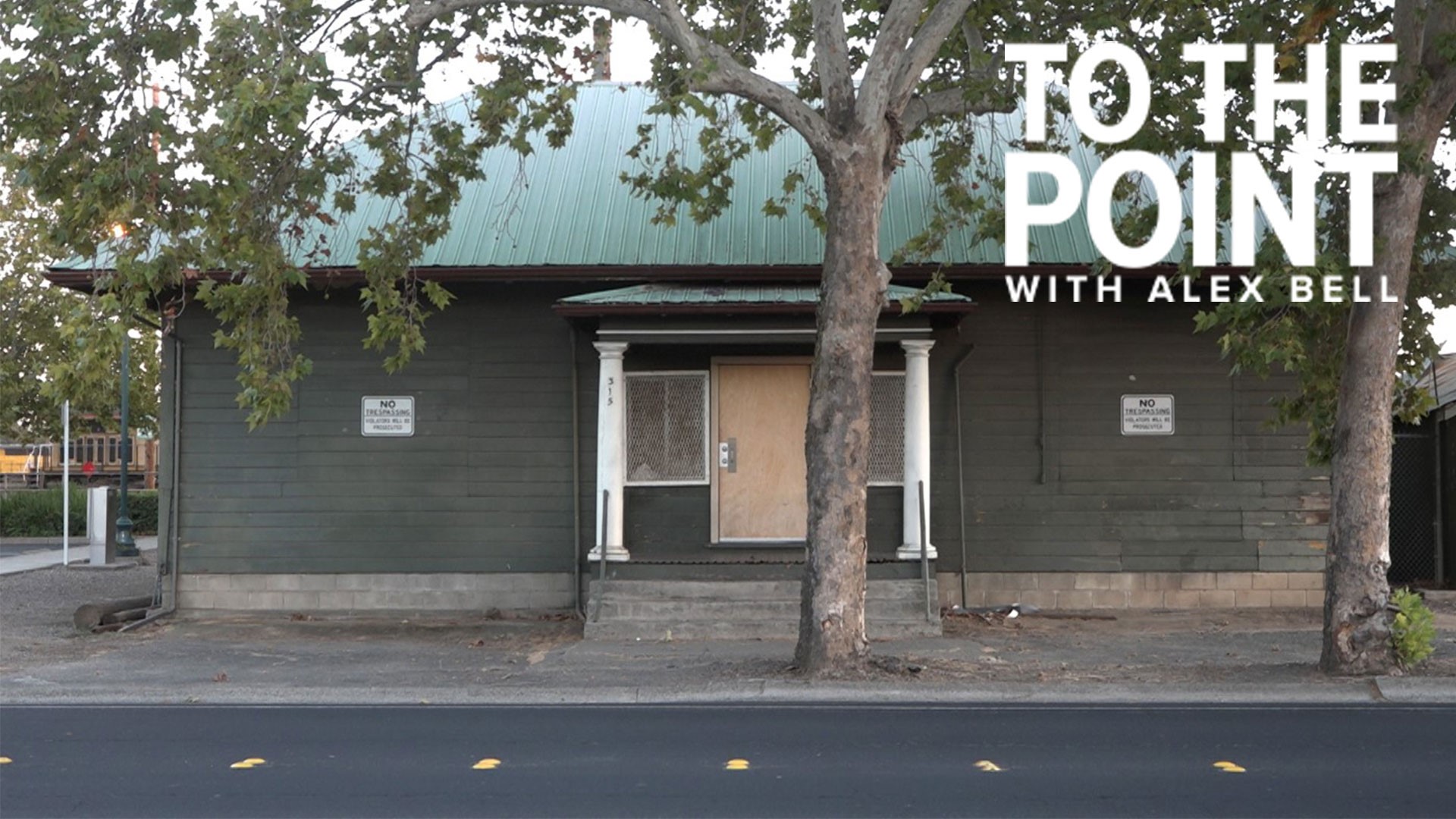ROSEVILLE, Calif. — In this housing market, what if we told you, you can own a historic building — for free. The catch is, you have to be able to move it.
Preservationists say the railroad history it holds is invaluable.
“It's just been hiding in plain sight," said Alexa Roberts, Belvedere Preservation Alliance president.
Some may see an abandoned eyesore, with its peeling camo-green paint.
“I feel like it's kind of aided it in blending in over the years,” said Roberts.
And its eroded porch beams.
“It's a cool porch," said Roberts.
But Roberts doesn’t see a dilapidated building.
“I see a building that's full of possibilities," said Roberts. "It is pretty wild that I'm standing here talking to you about this building.”
That’s because the 114-year-old structure at 315 Church Street in Roseville, California is one of a kind.
“It's extremely rare! so of the dozen that are so that was built, this is the only known surviving southern pacific emergency railroad hospital," said Jean-Guy Dube, Rail Depot historian.
At the turn of the 20th century, railroad construction continued to boom – along with the physical risks.
“It dealt with a lot of employee injuries. and so wanting to retain employee loyalty, and also to care for their workers, they started contracting with local surgeons in the area," said Dube.
This marked the infancy of our modern healthcare system.
By 1870, the railroad company established its first two big hospitals in Sacramento.
Workers paid a fee, and the company subsidized the rest. Extravagant hospitals in Sacramento, no longer exist.
Later came smaller, emergency hospitals like the one at 315 Church Street
“It's been serving our town since 1908," said Roberts.
They were built where industrial accidents were more likely to happen.
“When you had a railroad hospital like this, it could provide immediate emergency first aid care," said Dube.
The 12-hundred-square-foot building was efficient and followed a basic layout.
"You had a doctor's office, a small pharmacy, you had an emergency surgery room, and then you had a recuperating room, and then a small waiting room. It had three beds for injured railroad workers to recover," said Dube.
One of Roseville's original board of trustees members, and former mayor, Dr. Bradford Woodbridge treated patients here before they were transferred to larger hospitals in Sacramento and San Francisco.
“I mean, imagining doctors that took care of our railroad workers using that sink that's still in there. That's pretty crazy," said Roberts.
The railroad company closed its hospital department in 1968, and historians like Dube thought the railroad hospitals had all since been demolished- until this year.
“I was just shocked and delighted to find out that one of these buildings had actually survived!" said Dube.
Narrowly escaping debris from the Roseville railyard explosion in 1973, the building went on to serve as a training classroom, office space, and 10 years ago storage for the boy scouts. Roberts said she learned in the 70s, a local group had saved it from demolition.
“Now it's our turn. So what are we going to do with this building," said Roberts.
The city of Roseville says the parcel where the building sits will likely be used for more parking as Amtrak increases train service, and it's too expensive for the city to restore. Officials say they did a thorough inventory of historic structures. 315 Church Street does not have a historic designation.
But Dube says with some restoration work, it has the potential to be included in the National Register of Historic Places because of its unique backstory and original details.
“These classical supports are my favorite part, probably because they're totally original,” said Roberts.
To save this history, preservationists like Roberts and the city are now working together to find someone to move the building.
“The community of Roseville has a unique opportunity to potentially save and preserve this building," said Dube. "It definitely would be a magnet for people who appreciate railroad history.”
Dube and Roberts say it doesn’t necessarily have to be rehabilitated to its original form. Any sort of new way to reuse the building can still help share its history for generations to come.
"It just tells another part of the railroad history, not only for Roseville, not only for California, but it has the potential of saving that road history for the western united states,” said Dube.
To learn more, click here.



















